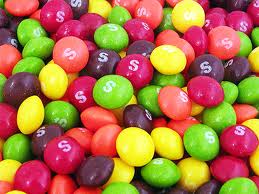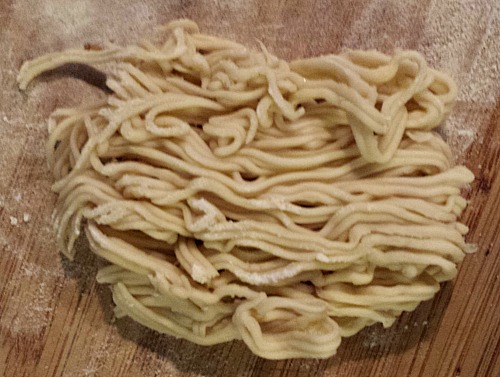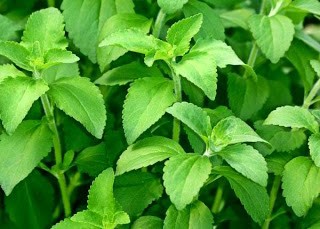What Causes ADHD & ADD?
I would like to point out that I’m just a mom who researches about all kinds of issues that arise in my kids that my grandparents never had. Why is that? Why is it that my grandmother never had to be put on ADHD meds.
This is a post I wrote a few years ago on my blog. I am reposting it here for your benefit. A few changes have been made, like the current ages of my kids now and the new link to my sister post on Sweeteners.
If you have already read the post called Sweet or Maybe not so Sweet, Sweeteners you may be wondering what affects does the artificial flavoring and color do to us that’s so bad? Well this post we will slightly tap the effects of artificial food coloring. Flavoring will be a separate post.
The Feingold Assoc. is a primary source for me since a little over a year ago when I wanted to find out about the effects of food on two of our children who were diagnosed with ADD and ADHD. We were prescribed medication which made its own issues within my kids. Jo-Jo, at that time 10, lost around 20lbs and refused to eat on the only medication that actually worked for the ADD. Spidey, then 5, took 2 different kinds, and the only one that worked was too much for his little body.
So we looked up alternatives to the meds, and found Feingold. Since we changed our children’s diets we found that don’t need the medication anymore. We kicked the meds to the curb after just 2 months of taking them. As long as we stick to the plan, they are fine. If we don’t stick to the plan, bad things happen. Check out my Sweet or Maybe not so Sweet, Sweeteners post for the description of one time when my ds9 was given Vanilla Wafers in Sunday School.
Take your time to click and read through the links below. They will guide you through what we have found through them and other sites about food coloring.
The Feingold® Association of the United States. – An organization of families and professionals founded in 1976
Check this article out from Feingold on the amount of mercury and lead allowed, by the FDA, in our foods and medication, and how much is actually in them. But aren’t the FD&C dyes certified to be safe?
This article from Feingold shows how food coloring like Yellow #5, Red #40 Blue #1 are directly linked to ADHD. My friends, does this sound at all familiar to you? Just asking. How can a simple diet help so many different problems?
On Feingold’s main page they have a you tube video with an introduction to what Feingold has discovered. Introduction by Jane Hersey, Feingold Association National Director. They tell you what the effects are of colorings, but also, fragrances, BHT, BHA, plus other additives and preservatives as well. These things are just as important to avoid, but not covered in ‘this’ post. They will be individually covered in a later post.
Feingold has a list of the symptoms helped by eliminating the preservatives, additives, colors & flavoring from our diets. Symptoms that may be helped by the Feingold Program.
Just to clarify, I have not purchased any materials from Feingold’s website, for the shear fact that I have a habit of buying things that we really don’t “need”, So, when I get the message from the Lord that I have exhausted all measures of our own research, then we will probably get some materials from Feingold and other trusted organizations to fill in the gaps if need be.
I have to ask, have you ever thought about how medications help you get better? Is it because some scientist created a combo of chemicals that happen to react together to cure or treat something you have? Your answer is probably Yes. Ok, another question. How do most medications get in your body? Your answer is probably, ingested. Even if your answers are different than my assumptions of your answers, stay with me here. Does it make sense that the food you ingest may also have been created by some scientist creating a combo of chemicals that happen to react together to destroy your body? Just a thought of mine. Our country used to produce food made by combining foods. It seems now we are getting “food” that combines derivatives of foods that have been chemically or biologically altered. Not to mention most are genetically altered. (There will be another post at a later date about GMOs)
Listed below are a few articles on Food Coloring in the News within the last year. The reason I am linking these is to show you that this is a concern all over America and the only people knocking it down are those who make a buck off the foods we buy.
Food coloring linked to ADHD? Ditch those gummy bears – purple text is quoted from the article FDA advisory panel will decide whether available data links artificial food dyes and the disorder.
The government previously ruled that there is no proven relationship between food dyes and hyperactivity in most children.
 Here is a quote from the Food Advisory Committee: Certified Color Additives in Food and Possible Association with Attention Deficit Hyperactivity Disorder in Children March 30-31, 2011
Here is a quote from the Food Advisory Committee: Certified Color Additives in Food and Possible Association with Attention Deficit Hyperactivity Disorder in Children March 30-31, 2011
Certified (―synthetic‖) color additives have been a source of controversy in the U.S. since the 1970s, when pediatrician Dr. Benjamin Feingold first claimed a link between children’s behavior and consumption of the additives. The Food and Drug Administration (FDA or the Agency) reviewed literature available at the time and concluded that the data suggested that some children may be adversely affected by synthetic colors but that more research was needed for the Agency to make any final determination with regard to the effects of color additives.
Ok, so back in the 1970’s there was a link found between Certified (―synthetic‖) color additives and children. but that more research was needed for the Agency to make any final determination with regard to the effects of color additives. They quoted that Dr. Benjamin Feingold first claimed a link between children’s behavior and consumption of the additives. According to the opening statement those are color additives. I love the misuse of language here. This is such a common practice of confusion, so that we are so tongue-tied on the language that we forget about the fact that they knew in the 70’s of this problem, and are disregarding the research. If you look into Dr. Feingold’s website you can see for yourself the results of omitting Certified (―synthetic‖) color additives from the diet.
Experiment with omitting color additives for yourself. Don’t rely on my blog, the government, or Dr. Feingold to tell you what you should eat. Try omitting the coloring and see if there is a difference in you or your child. That is the only way you will be convinced of whether it is a problem for your family or not.
My only purpose for this post is to share what we have been through with a little background knowledge for you to read for yourself on the subject if you want. The main reason I’m sharing this with you, is because we should KNOW what we are eating whether it’s synthetic / natural / GMO / or just plain dangerous. Know what you are eating. Don’t be too tired to care, or hold our FDA to such high standards. Do you know who the FDA is? You will find that quite a few or most are owners of the big companies that make a lot of the stuff we are trying to eliminate from our families diet. Check it out for yourself.
I tried an experiment on my son who was prescribed ADHD meds and couldn’t keep up with the side effects of them. After a month of being off the medication we tried the following experiment and I found a direct link in food coloring to him. I gave him a homemade sugar cookie without food coloring, and he responded normal. The next day he ate the same breakfast and such and I gave him the same sugar cookie recipe – homemade cookie with food coloring, and he went crazy. We could not carry on a conversation with him, he could not repeat back to me what I said, he just wanted another cookie. About 45 minutes after eating the cookie my child, who does not nap, fell asleep in the middle of the playroom floor. That was just one way we tried to figure out what was one of the things spinning him out of control all the time. We did experiments with other additives later throughout the year and we have been able to keep him and his sister 15 off all medication without the issues we had before, unless unsuspecting family and friends give them food with the “junk” in it.
 Do synthetic food colors cause hyperactivity? Critics blame the additives for triggering behavioral problems in youngsters (purple text is quoted from the article)
Do synthetic food colors cause hyperactivity? Critics blame the additives for triggering behavioral problems in youngsters (purple text is quoted from the article)
In this article I read: “The (synthetic food dyes) used in the U.S. are absolutely safe,” said Joseph Borzelleca, a professor emeritus of pharmacology and toxicology at Virginia Commonwealth University School of Medicine. “Food colors are among the most thoroughly studied of the food ingredients.”
That hasn’t always been the case. Originally, naturally derived ingredients were used to make food look more appealing — saffron, for example, gave rice a yellow tint. In the 1850s, manufacturers began using long-lasting coal-tar dyes to brighten both fabric and food, a practice that sickened countless unsuspecting consumers.
Nearly 200 substances were in use when safety testing was finally required in 1960; only a handful survived the testing process.
I was a little shocked by this section of the article, to say the least. It took them 110 YEARS to study these additives at all. but Food colors are among the most thoroughly studied of the food ingredients.” And the people didn’t have a reaction, they died! WOW! So they switched to synthetic food dyes. I guess since are kids aren’t dying, it’s ok. NO! Not ok for me. Read on to see what the study mentioned in the above article said about the final outcome & what the FDA said about it. Really you should read the whole article.
The issue resurfaced in 2007 after University of Southampton researchers reported in the Lancet that hyperactive behavior increased in two groups of children — age 3 and ages 8 and 9 — when they consumed two different mixtures of artificial colors, plus a preservative.
And the study didn’t just rely on parental ratings of their children’s behavior, which can be subject to bias; it also used ratings generated by teachers, researchers and computers.
 The British Food Standards Agency, which commissioned the trial, subsequently advised concerned parents to reduce or eliminate six colorings from their children’s diets. A committee of the European Parliament then voted to ban all synthetic dyes from foods consumed by babies and small children.
The British Food Standards Agency, which commissioned the trial, subsequently advised concerned parents to reduce or eliminate six colorings from their children’s diets. A committee of the European Parliament then voted to ban all synthetic dyes from foods consumed by babies and small children.
Somebody over there was paying attention. But not the FDA…
The FDA still maintains there’s “no evidence” of a link between dyes and hyperactivity. When it reviewed the Southampton study, the agency “found no information to suggest that the behavioral changes noted were adverse, detrimental or maladaptive.”
Ok, they don’t deny that there WERE changes, just that they’re not adverse, detrimental or maladaptive.”
Detrimental: adj. Harmful; tending to cause harm
Maladaptive: Maladaptive behaviors refer to types of behaviors that inhibit a person’s ability to adjust to particular situations. This type of behavior is often used to reduce one’s anxiety, but the result is dysfunctional and non-productive. For example, avoiding situations because you have unrealistic fears may initially reduce your anxiety, but it is non-productive in alleviating the actual problem in the long term. This definition was taken from About.com.
I’m not sure I can put my comment of the meaning those definitions give that statement after knowing what my child went through before we removed the “Certified (―synthetic‖) color additives“. Like I said earlier, my purpose is to inform people who want to know why my family chose to eat the way we do. My purpose is not to tell anyone what they will or will not do with their own families. I can tell you what we did, and say “hey, try this out”. Hope this post is helpful in your journey.
Think to yourself how much food would be recalled if the FDA actually banned synthetic food coloring? They and the big corporations like BP all the way down to the commercial corn farmers would lose LOTS of money. They will most likely fight any food ban that causes a lot of money loss. As much as we would like to think it is about the health of Americans, it’s not, it’s about money!




